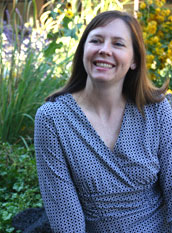Professor looks at big picture of larger classes
Mention larger classes, and the tendency is to think lesser quality. But one Northern Arizona University professor is on a mission to change that mindset—demonstrating that bigger can be made better.
“We’re a small-class-size university, but not every class will be small. Even so, when classes are larger they can still be amazing,” said Michelle Miller, a psychology professor and nationally recognized expert in course design who is using her know-how to lead a campuswide team charged with making large, foundational classes more engaging for students while improving their learning outcomes.
“With careful attention to a course’s design, some larger courses end up being even more engaging than expected,” she said.
Modeling efforts after guidelines set forth by the National Center for Academic Transformation, a non-profit organization with a mission to show how information technology can improve quality and reduce costs in higher education, the team now has several successful course redesigns behind them. As campus interest continues to grow, Miller is eager to share the center’s proven methods with other instructors of larger courses.
At NAU, “large course” is a relative term, according to Karen Pugliesi, vice provost for Academic Affairs. “It could refer to a 200-student course—the maximum number NAU can physically seat in any one classroom—or it could be 15 sections of the same course with just 40 students each,” Pugliesi said.
Miller’s efforts began about five years ago when she and her colleague, psychology chair Laurie Dickson, first began looking for ways to improve the department’s popular Introduction to Psychology course, which certainly fit the course redesign mold. With up to 10 sections of the course being offered at NAU each year and each section serving as many as 200 students, it historically has featured large classes dominated by the lecture method and inconsistency among sections.
The pair employed strategies such as combining large sections in team-teaching arrangements, developing online assignments to replace traditional classroom-based coursework and creating focused, small-group experiences. Other changes included the use of repeatable, online quizzes and web-based discussion boards where students submitted questions to topic experts recruited from departmental faculty.
The result has been a noticeable decrease in drop-failure-withdrawal rates and higher course-completion rates. As an added perk, the department has reduced its costs of delivering the course by 30 percent.
“The National Center for Academic Transformation has really attacked the idea that you can’t improve outcomes without spending more money. They’ve even done one better by showing how you can not only improve but actually save money,” Miller said.
Miller, who is one of just 25 NCAT course redesign scholars and consults with colleges and universities across the country about the course redesign process, noted that other successful redesigns have taken place at NAU in mathematics, chemistry, philosophy and biology, among others.
She believes that looking at how large courses are structured will lead to better efficiency and also will create the kind of learning experiences NAU wants for its students.
Pugliesi said it’s unlikely NAU will see a trend toward more larger classes, “but the ones we do have we will keep striving to make better. We want students to learn more and be more likely to succeed.”
A call for proposals to support course design projects will be released soon.



